6 Simple Steps to Start Scuba Diving
So you’ve seen all the pictures plastered on airport walls and want to know how to start scuba diving. Yes you know you are going to need to learn to dive but where do you start? Can anyone do it?
Absolutely! You will need to take a course and be taught by someone qualified and hopefully experienced in the world of diving. So here are a few steps to get you started.
Disclosure: Some of the links in this post are affiliate links. This means if you go through them to make a purchase we will earn a commission. Our aim is to help our readers through these links so everything we promote will be high quality products we personally believe in.
1) Meet Physical Requirements
It’s no secret that diving is a physically demanding sport. This means that before you start scuba diving you should not only consider your physical condition but also your prior skills.
Can you swim?
Seems like an obvious requirement I know, however when I first started teaching it shocked me how many people who couldn’t swim were signing up for diving lessons.
Now no one is expecting you to be fantastic. There are just a few swim tests that need to be completed for some entry level qualifications. For PADI Open Water this entails swimming 200 metres (or 300 metres with mask, fins and snorkel) and a 10 minute float with your head above water, not timed.
Far from being assessments of your technique, these tests are purely to make sure that you are able to look after yourself in the water. It also greatly helps your comfort levels.
So if you aren’t comfortable in the water or maybe can’t even swim yet then it’s worth brushing up on your skills before you start scuba diving. After all there’s noting like the thought of sinking to the sea floor to put a damper on your experience.
Do you pass the Medical?
Now this one comes as a surprise to a lot of people when they first get introduced to the world of diving, including myself. You see in order to start scuba diving you will need to sign a medical declaration.
To put it simply this is a list of statements to do with your health. You then have the option to answer yes or no to each one.
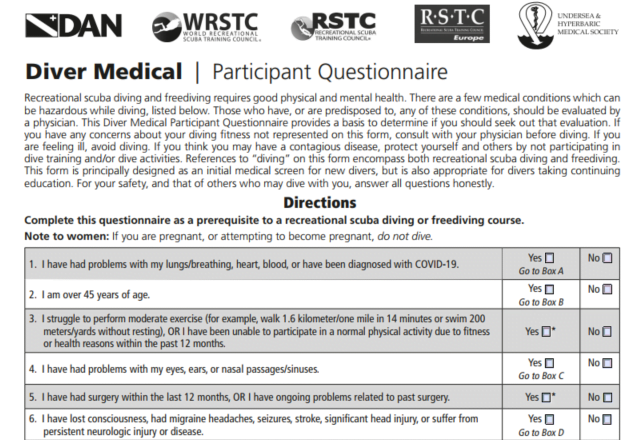
For those of you who are as fit as a fiddle and can sign no to every statement then this step should be a breeze for you. In fact you pretty much don’t need to worry about it until the day. However if you have or have had health concerns and need to sign yes to one or more of the statements then you will need to go and get signed off by a doctor before you start scuba diving.
Either way check out the form before you go. You don’t want to end up like me, trekking around a small island to find a doctor that will sign you off for your childhood asthma just before your course is about to start. Not to mention in some cases it can save you having to pay for a doctor abroad, a doctor whose reliability may be a little questionable.
2) Choose The Right Course
So if you have already done your research then you may know that the most popular entry level course is the Open Water course. However what many don’t know is that there are other ways you can start scuba diving.
The easiest way to explain how course progression in diving works is with a handy flow chart or you can head on to our learn to dive pages to find out more.
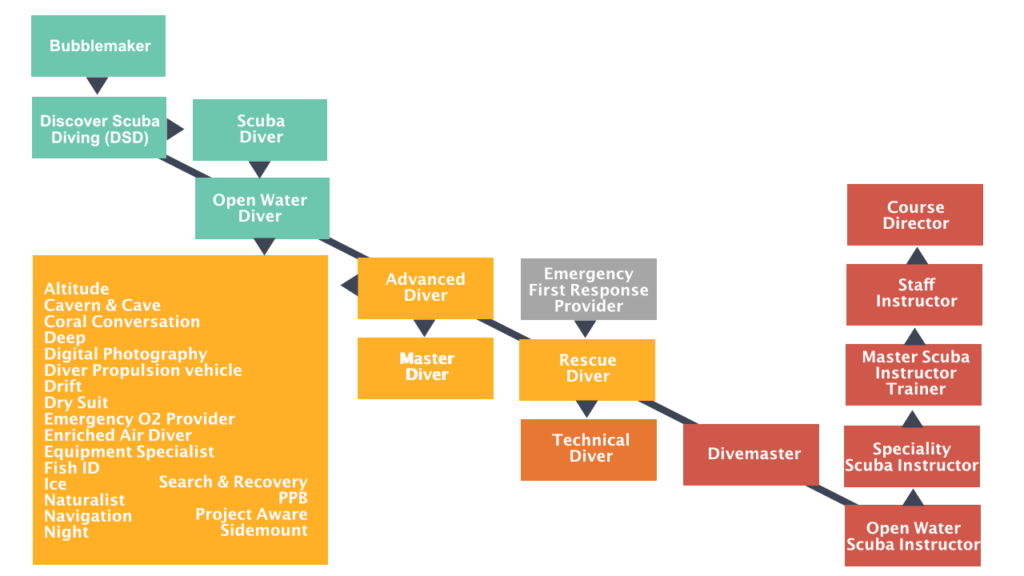
Discover Scuba Diver
So the first most basic step to start scuba diving you can take is through a DSD (Discover Scuba Diving) programme. Essentially this is a guided experience underwater. You are taught a few basic skills and theory before going for a dive either in a pool or open water. It usually takes around half a day to a day to complete. After that you can choose to do as many of these dive experiences as you want (with the same school). Although you must go with an instructor or DSD leader and are restricted to a a depth of 12 metres.
Similarly children above 8 years can participate in a Bubblemaker which is an experience limited to depths of 2 metres in shallow water.
Scuba Diver
Progressing on from DSD you have the Scuba Diver qualification. In this you will need to complete 3 chapters of theory; 3 confined water skill circuits and two open water training dives. Once completed you are qualified to dive to depths of 12 metres as long as you are accompanied by a professional (divemaster or instructor).
The difference here between DSD and Scuba Diver is that the additional skills and knowledge you have acquired will allow you to have more freedom of movement both above and below the water. It is also a recognised qualification making it easier to sign up for guided fun dives.
Open Water Diver
Then we come to the Open Water course. This requires completion of 5 chapters of theory; 5 confined water skill circuits and 4 open water training dives all led by a qualified instructor. Course duration varies on student and location but normally it takes about 3-4 days to complete. Once qualified you are able to go diving unsupervised with a buddy to depths of 18 metres.

So when you are thinking to start scuba diving it is worth considering your options. DSD and Scuba Diver programmes are great for those short on time and maybe not ready to commit the time and money to a full qualification but still want to give it a try. Open water is a great option for those who are already dead keen and want to get cracking in the world of diving.
If you find yourself torn between them then it’s also useful to know that your DSD and Scuba Diver can contribute to an Open Water qualification if taken in the same year. Start off by giving it a try then take it all the way once you fall in love with it!
However if this interests you it’s a good idea to get in contact with the dive centre you want to certify with to see what options they offer. Or if you don’t have a centre yet send us a message and we will try and help you out.
3) Choose Your Location
So hopefully now you are ready to dive and you know which course you want to do, but where should you start scuba diving?
Well before you go charging onto the internet to find your answer there are a few factors you should consider before choosing your ideal location.
Environment
One major thing which changes between locations is the environment. You can pretty much dive in every country in this planet and almost every water system. So as you can imagine the variation in water conditions, temperature and visibility is huge.
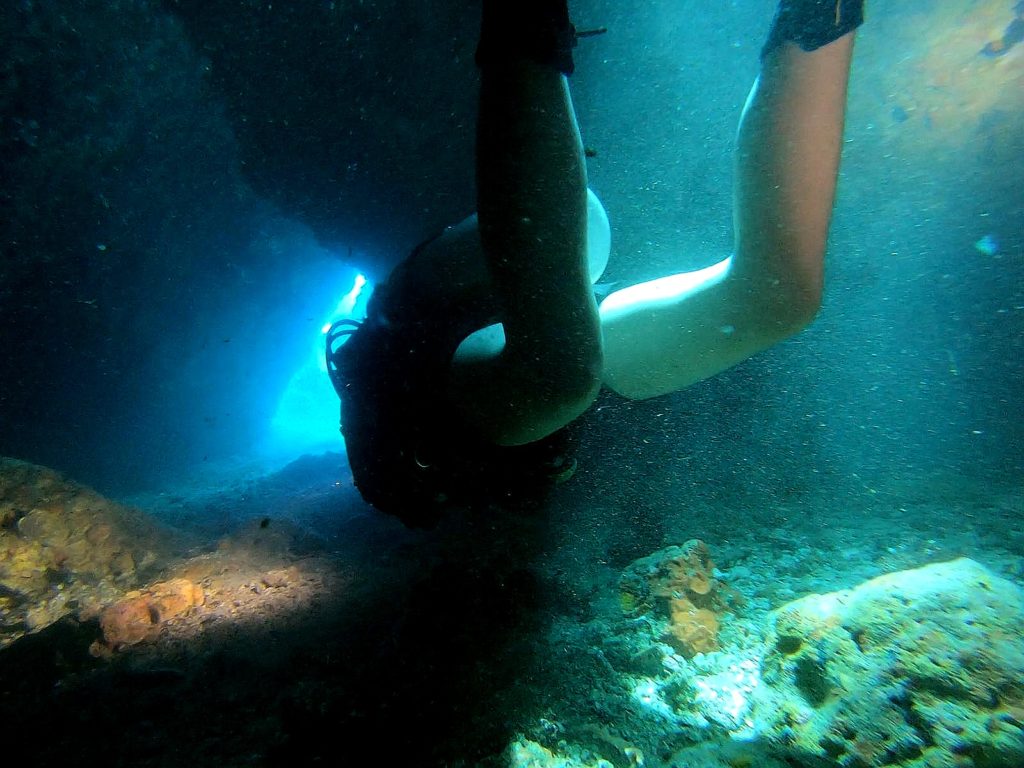
If you are diving far north or far south of the equator then waters tend to be a lot cooler and visibility poorer. Beginners can learn to dive in these conditions however they are slightly more challenging. On the up side this could make you a better diver.
Diving closer to the equator generally means water (and air) temperatures tend to be warmer, although it can also vary seasonally. Visibility also tends to be a lot better. In these areas you also tend to find a lot more dive centres as generally people enjoy the ease and feel of warmer climates as opposed to cold.
Water System
One thing you may not have considered however is the type of water system each location offers. Some being more enclosed fresh water systems like lakes, quarries and caverns and others the open ocean.
So decide on what best suits you and this can help you narrow down your search.
Attractions
Similar to the environment each diving location can also vary on the type of attractions they offer both in and out of the water.
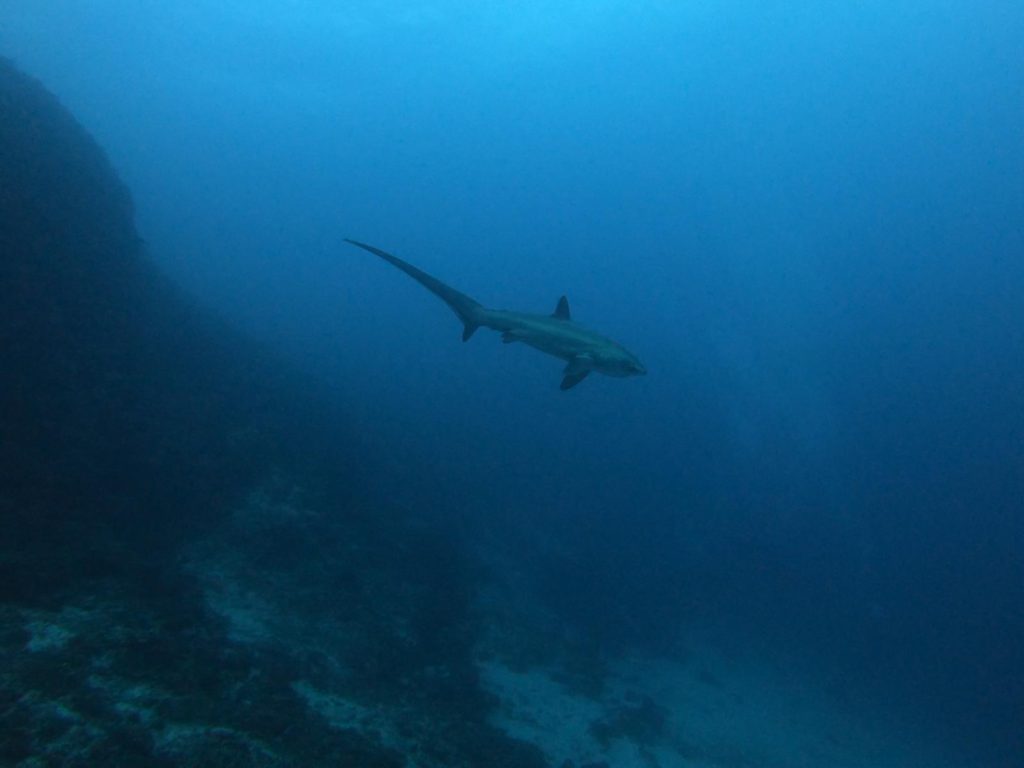
Some things could influence you decision on where you learn to dive. Marine life can be one thing which could sway your decision. With the chance to see turtles, sharks and whales being a big draw for some people. Reefs, wrecks and other underwater landscapes could also be a factor.
Although all really good reasons to choose a dive location I also need to butt in and say that you should be careful with this one. Most of the time you are learning to dive you will have so many other things to focus on that these attractions may just pass you by without you realising. Not to mention that your skill and qualification level will also be quite low. This means some of the areas where these attractions are could be off limits to you, that is until you get more experience.
Of course this does vary on where and what it is you want to see. If you are planning to be in the area for a while and even continue your dive education then absolutely, go for it!
Cost
When considering location you should the general cost of the area. A lot of South East Asian and South American countries are known for being budget friendlier. This is primarily because these areas contain a lot of developing countries where overall costs for rent, wages, fuel and other business essentials enable them to keep prices low. This is the same reason diving is more expensive in more developed countries like North America and Europe.

If you live in an expensive area for diving then you could consider traveling to get your certification. However this option means you will be paying for other expenses on top of your course like flights and accommodation.
On the other hand if dive courses in your area are fairly cheap then you could also consider getting certified closer to home. One approach is to get certified locally and then go on holiday where you are free to enjoy it fun diving. If you decide to go for the local option then you will likely also have more time to complete the course and even fit it in between your work life.
4) Choose Your Operation
Aside for all of these points one factor could sway your location choice entirely and that the dive operation. If you have found your ideal centre that meets all your needs then it may be that wherever they are is where you want to go. Or maybe you have found your ideal location and are struggling to pick the best centre for you. So how do we go about choosing the right dive operation?
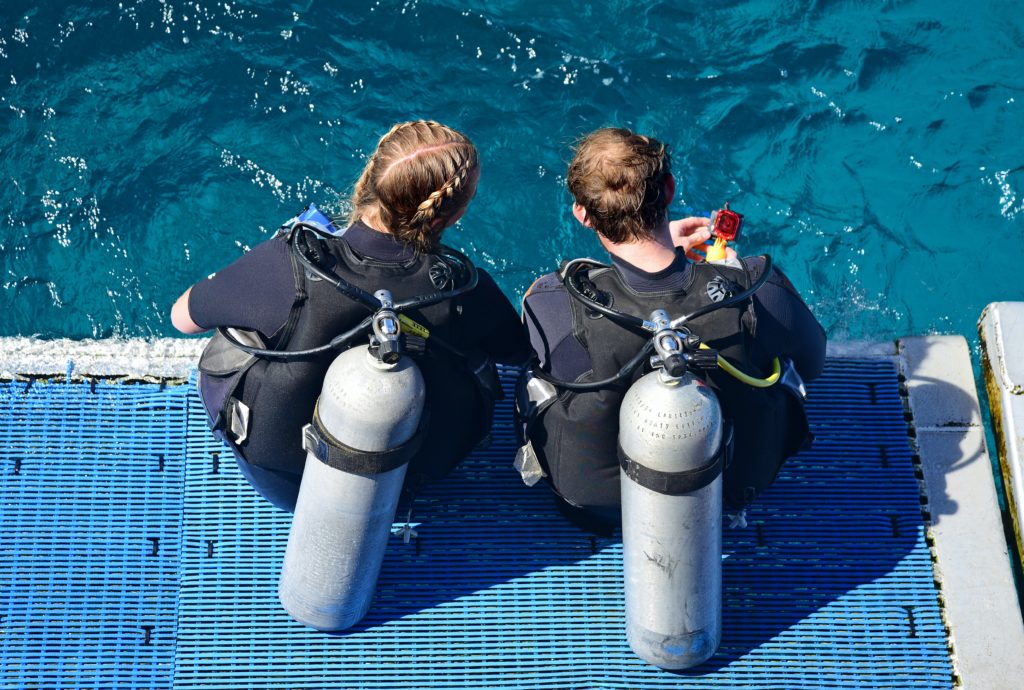
Cost
Aside from the general cost of the location you choose to go with, each dive centre will also vary in price locally. This may be a big factor in who you choose to learn to dive with.
When considering price one important thing to remember is that the cheapest course does not necessarily mean it is the best one. The last thing you want to end up with is cowboy divers who cut corners and don’t pay their staff to keep costs low. At the end of the day you are going to be putting your life in their hands.
A good diving centre will know the value of what they are selling, the instructors they have and area costs. Their prices will reflect this.
That being said, good dive schools aren’t necessarily the most expensive ones either. You can still dive on a budget and choose a good school. In fact most times the more expensive schools tend to be that way not for the quality of the diving but the added luxuries.
So how can you tell the difference between a good school? The best way is through recommendations. Ask around to other experienced divers or on social media. Often the best dive centres will have a lot of fans who won’t hesitate to shout them out.
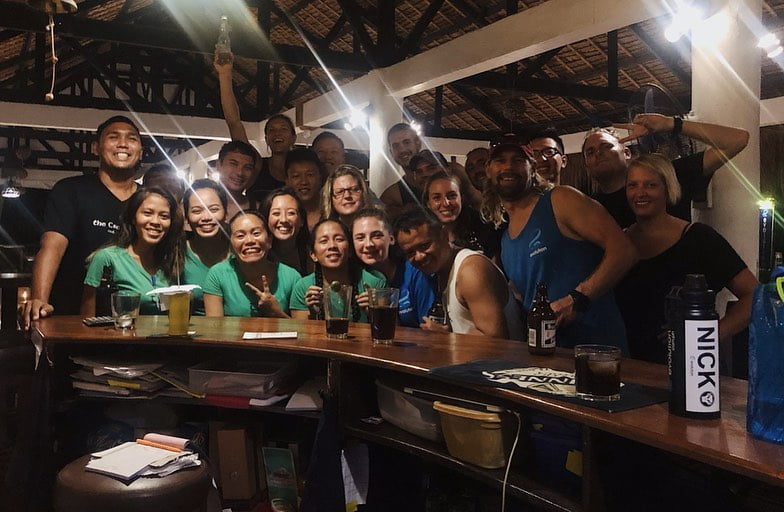
What is Included?
Before you start scuba diving you should also consider the overall cost of the course you want to take. At it’s most basic the price for a diving course is a quote for a certain amount of days spent in training. In most cases this quote will also include the certification fee; manual or e-learning cost as well as boat running fees etc. Everything that most divers need to complete a certification. However this is not always the case.
Some operations may decide to charge some of these items separately which can come as a shock to beginners who thought they were getting a good deal. Also find out what the companies policy and prices are for extra days of training if you need extra time and can’t complete the course in the quoted number of days. This should make sure there are no unhappy surprises when it comes to pay the bill.

Resources
One sure fire way to tell a good dive centre is by how they run the place.
The most visible indicator of a good dive centre is the state of their equipment, and no I’m not talking about if it’s new or not. Well worn equipment is fine as long as it’s serviced regularly and functional. So make sure to ask how often they get their stuff checked. Some of the dodgiest places I worked always had shoddy equipment in common.
Also try and check that the operation you are interested in stocks your sizes. Especially in BCD, fins and wetsuit. Theres noting worse than trying to learn a new hobby with the wrong equipment.
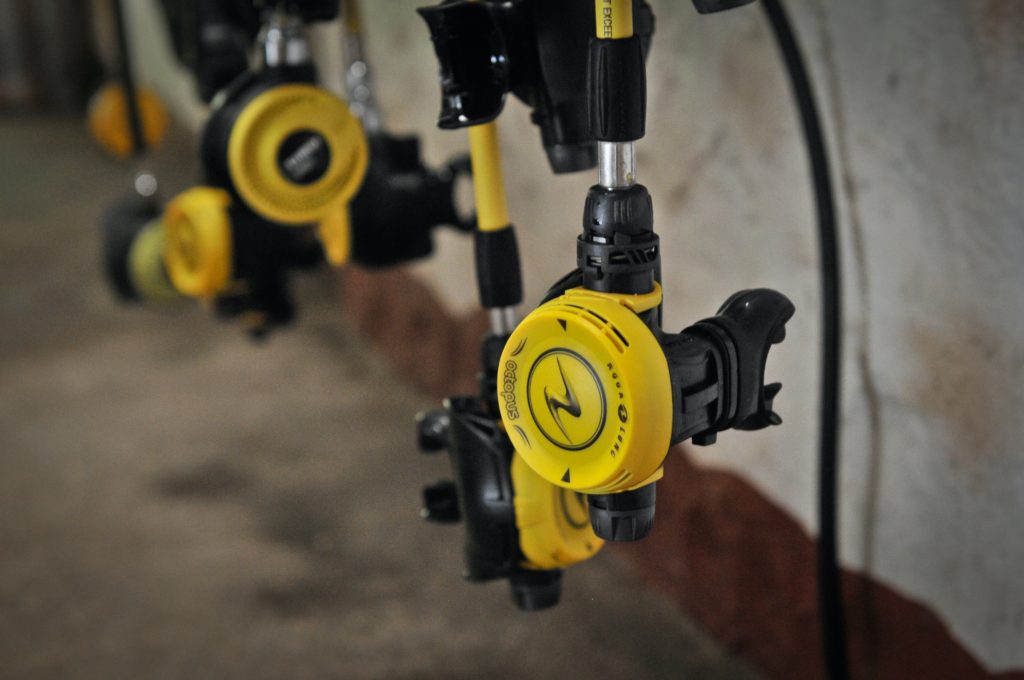
Structure
Once your happy with the equipment the next step is to look at how to operation actually runs its courses.
Important questions to ask are if you will have the same instructor throughout the whole course? This can help you to build a bond and make sure you have a seamless transition between segments.
Also ask if you will have any choice in the instructor that will teach you. If you have already built trust with someone and they understand you’re learning methods or maybe you don’t get along with certain personalities its important to know if there will be some flexibility choice.

Last but not least ask how big the classes will be. The biggest an open water class can be is 8-1. Larger classes are common of cheaper operations who want to churn out more students. They are not necessarily a bad thing however you definitely have less one on one time with the instructor. There may also be more pressure to move on before you’re ready and you will need to wait longer between demonstrations. This may not seem like a big deal however when it gets to your open water dives it means you will be spending more time waiting around than actually doing any diving.
The ideal class size for many instructors is about 4-1.
Agency
Unbeknownst to many beginners is that there are in fact many dive agencies. These are essentially organisations which issue the diving certifications according to their training and standards. Each dive centre will have usually choose one or maybe even two who they certify with.
Some of the most well known include: PADI, SSI, SDI, NAUI, BSAC & CMAS.

Although there are slight differences in the requirements and way the courses are taught generally there is not a huge amount of difference between agencies. All of them have high safety standards and proven methods of teaching.
One small difference you could see is the price of the courses. This is due to the different fees dive centres need to pay the agencies to certify students.
However in my opinion at this stage in your diving journey, agency is not something you need to worry over too much. The only time it really makes a big difference is when you start to enter the professional side of diving.
Even if you choose one agency for your entry level you can always cross over later for whatever reason. Most dive training agencies hold equivalent courses at all levels.

5) Invest in Gear
Ok, so the hard part is done. Your all set up, booked in and signed up. Surely that’s it right?
Well yeah, sure, if you want. However if you really want to make sure that your first experience of learning to dive is a good one then there are a few last tips you can take into account. Investing in your own gear for example.
Just to make it clear that this is optional. In fact almost all dive centres I know include equipment rental in the cost of their entry level courses. After all what are the chances that a beginner is going to show up fully kitted out. Pretty much slim to none.
That being said there’s nothing stopping you from going out and getting a few bits for yourself. Especially if diving is something you think you’re going to be doing for a while.
I’m going to keep it short and say that a mask and maybe even fins are all you should go for at this point. They are both items which, if chosen correctly, will greatly improve your comfort. They also happen to be gear you can also use for snorkelling.
If this is something that interests then I would highly suggest you check out the beginners guide to buying your first scuba gear and everything you should know when buying a scuba mask.
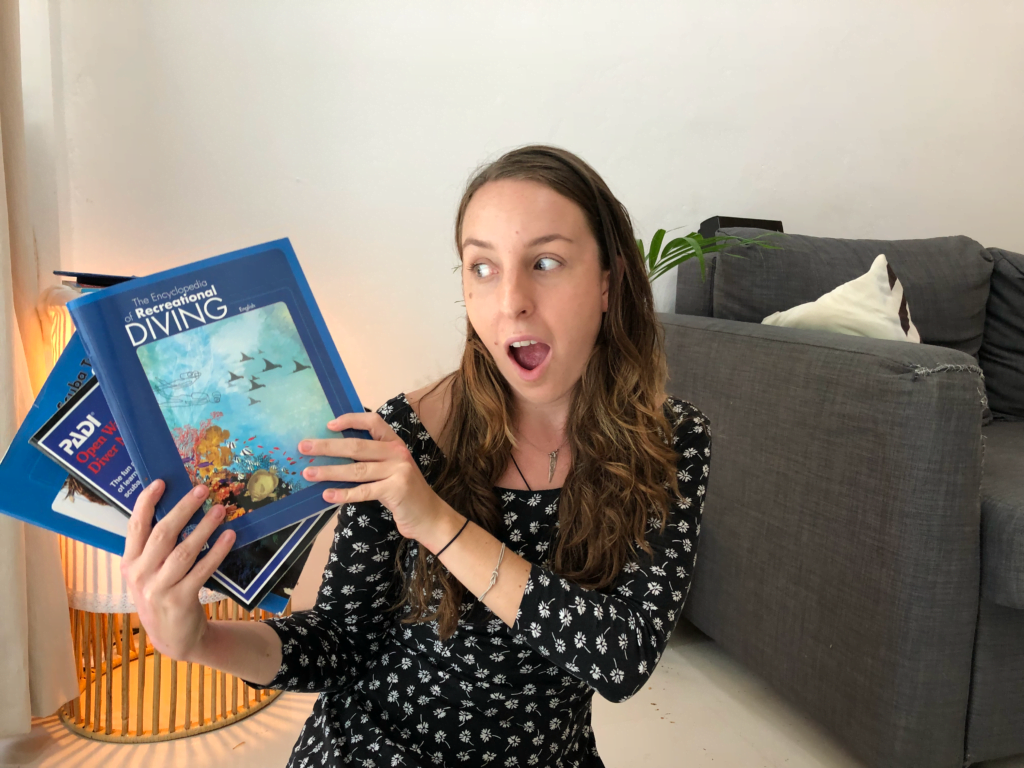
5) Start Scuba Theory
Dive theory is the last thing you can do before actually getting in the water. For that reason it is the sixth and final step you can take before actually learning to dive.
Now there are two ways you can complete your dive theory. Either traditionally with a paper manual in which case you don’t need to worry about this step. Or you can use e-learning online.
There are many pros for both methods however for the most part I still believe that nothing beats in person training. This way instructors can get a feel for your understanding of the subject and students can have their questions answered with more context. Win win.
That being said if for whatever reason you may be short on time, or maybe even want to brush up a while before you take your course, e-learning could also be an option for you. In which case you will need to get in contact with your dive school and make sure you have it completed by the time you’re in water training comes around.
Are You Ready To Start Scuba Diving?
Your first time scuba diving can either make or break your diving career. Good experiences will make you want progress with your diving and bad experiences will make you want to quit entirely. Thats why when you first learn to dive it’s so important that you feel comfortable.
No one wants to go into something blindly so I hope these six steps give you the confidence to go out there and start scuba diving. As always if you have any questions then don’t hesitate to get in touch either with email or in the comments below.
Like this? Then help us grow a little and give it a share. Your voice is louder than you think!
Related Posts...
Want More?
Sign Up for updates straight to your inbox! Woohoo!


You have written such a nice guide for anyone who wants to scuba dive. The basics are always the best! I want to share a company that is specialized in diving classes. “Frog Dive“. They have classes and courses that suits all diving skill levels. Thanks again
Thanks Karen for your recommendation and its great to hear that we can be of some help!